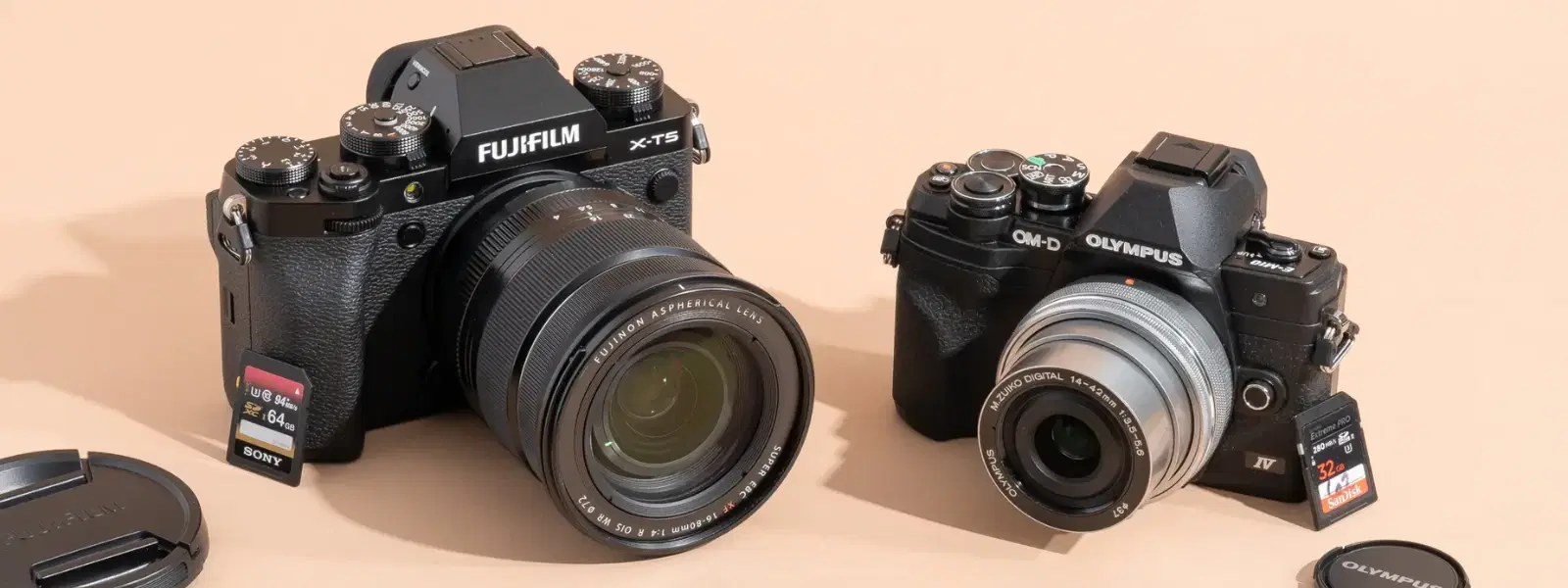
Consumer Electronics
•04 min read
Humanity has always been captivated by the majesty of the cosmos, and astrophotography allows us to capture its enchanting beauty. With so many options available today, the debate between mirrorless and DSLR cameras for astrophotography remains a hot topic. This blog post delves into the key aspects of each system, helping you learn how to choose the best camera for astrophotography based on image quality, sensor technology, low-light performance, and overall usability.
Mirrorless cameras are renowned for their innovative design which eliminates the traditional reflex mirror. Instead, these cameras rely on an electronic viewfinder that provides real-time exposure previews. Their compactness and quieter operation are ideal for night shoots, ensuring that the serenity of the dark sky is not disturbed. Many photographers appreciate the mirrorless camera advantages, especially when seeking a lightweight and agile tool for capturing stars and deep-sky phenomena.
DSLR cameras have long been a choice for enthusiasts and professionals alike in the realm of astrophotography. Featuring a reflex mirror and optical viewfinder, DSLRs deliver a familiar shooting experience with robust build quality and an extensive range of lens options. These dslr astrophotography tips are invaluable as they illustrate the enduring appeal of these cameras for stargazing and detailed celestial captures.
The sensor plays a pivotal role in capturing the intricate details of the night sky. Whether you opt for a full-frame or crop sensor, advancements in astrophotography sensor technology have significantly enhanced the performance of both mirrorless and DSLR cameras. When comparing mirrorless vs dslr image quality, it’s essential to consider how each sensor adapts to long exposures and star-filled frames.
In astrophotography, the ability to excel in low-light conditions is crucial. Both mirrorless and DSLR systems are designed with impressive ISO capabilities and noise reduction features that are vital for low light performance cameras. This low-light finesse enables photographers to capture the soft glow of distant galaxies and the twinkle of stars with clarity and precision.
As any astrophotography enthusiast will attest, managing bulky equipment under the night sky can be challenging. Mirrorless cameras bring significant advantages in terms of size and weight, making them a popular choice for those who enjoy spontaneous night shoots. Meanwhile, DSLRs, with their robust construction, often come with gear essentials that provide reliable support in tough conditions. It ultimately depends on whether you prioritise the portability of a mirrorless camera for night photography or the durability of a dslr camera for stargazing.
Mirrorless cameras come with many attractive features including advanced electronic viewfinders, silent operation, and superior autofocus capabilities in low light. These attributes make them a favourite for astrophotography by ensuring that every moment of a star-filled sky is captured accurately. If you often shoot in quiet environments, the silent operation of a mirrorless model can help maintain the serene ambience that is essential for night photography.
Despite the rise in popularity of mirrorless systems, DSLRs continue to be highly regarded by many astrophotographers. Their strengths lie in longer battery life and a broader selection of lenses which can provide the versatility you need for various astrophotography projects. The robustness and familiarity of DSLRs, paired with expert dslr astrophotography tips, ensure that every cosmic detail is recorded with precision.
It’s important to consider that neither camera type is without its challenges. Some responsibilities fall on the photographer in terms of necessary modifications like H-alpha conversion for DSLRs to boost deep-sky performance, or investing in additional accessories to perfect the low-light capture with mirrorless models. Both systems require thoughtful consideration to meet the nuanced demands of astrophotography.
If you are just starting out or looking to take a professional leap, understanding your unique needs is critical. For beginners, an easy-to-use system with a gentle learning curve might be ideal, whereas professionals might focus on advanced features that support long-term growth and artistic exploration. This astrophotography camera comparison highlights that regardless of budget or skill level, there’s a solution tailored to your specific cosmic ambitions.
While mirrorless and DSLR cameras are excellent choices, dedicated astrophotography cameras can also offer enhanced capabilities in certain scenarios. They are particularly useful when specialised modifications are required, such as boosting H-alpha sensitivity for improved deep-sky captures. Deciding whether to modify your DSLR or to invest in an alternative might ultimately depend on your personal preference and the specific conditions under which you shoot.
Pro Tip: Mastering Astrophotography with the Right Camera
Did you know that modifying a DSLR with an H-alpha filter can significantly enhance its ability to capture deep-sky objects? For mirrorless users, pairing the camera with fast, wide-aperture lenses can make a difference in capturing stunning night skies.
Mirrorless and DSLR cameras both offer excellent options, but the best choice depends on your needs. Mirrorless cameras excel in portability and low-light autofocus, while DSLRs are known for durability and lens versatility.
Mirrorless cameras provide real-time image previews and possess faster autofocus in low-light conditions, though DSLRs can achieve comparable image quality with the right settings.
Many professionals confidently use both camera types depending on the specific demands of their astrophotography assignments.
Yes, DSLRs perform well, particularly when enhanced with modifications like H-alpha conversion or teamed with high-quality lenses.
It depends on your priorities; if portability and advanced low-light features are essential, a mirrorless system might serve you better.
The debate between mirrorless and DSLR cameras for astrophotography showcases that both systems bring unique advantages to the table. Mirrorless cameras are acclaimed for their compact design and innovative features that simplify night shooting, whereas DSLRs continue to excel in terms of durability and extensive lens compatibility. Ultimately, choosing a camera that aligns with your budget, technical requirements, and personal style will empower you to capture the night sky and progress in your photographic journey. With platforms like Tata Neu offering NeuCoins rewards for every purchase, you can invest smartly in the technology that fuels your cosmic adventures while enjoying the convenience of seamless shopping.